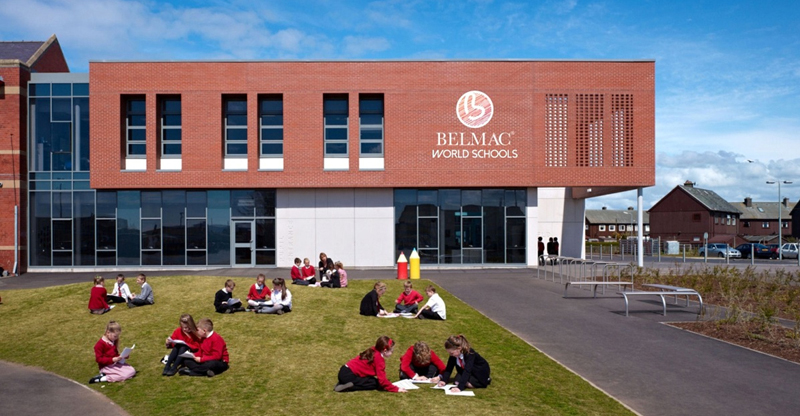As India’s urban landscape rapidly evolves, its youthful population is driving a surge in demand for quality education. With over 500 million people under the age of 25, parents are increasingly prioritizing their children’s education, creating a growing need for modern K-12 school infrastructure. This presents a unique opportunity for real estate developers to combine educational spaces with residential and commercial developments. By doing so, developers can tap into a booming market while contributing to the nation’s educational growth.
Mr. Prateek Jatia, a key figure in the real estate sector, has long advocated for integrated projects that blend schools with residential and commercial spaces. He believes, “Education is the foundation of a thriving community, and the future of our cities depends on how well we blend modern living with modern learning.” His approach focuses on creating self-sustained communities where families can live, work, and learn in close proximity. By designing schools with state-of-the-art facilities—including smart classrooms, sports complexes, and auditoriums—his projects cater to the growing demand for both quality education and modern living spaces.
Financial and Societal Investment
Building K-12 schools is not only a way to address societal needs but also a sound financial investment for developers. Many private and international schools prefer leasing properties instead of purchasing them, offering developers a stable, long-term source of rental income. This creates consistent cash flow for real estate projects, particularly in rapidly growing urban areas. Moreover, the presence of a reputable school can significantly increase the value of surrounding residential properties. Families are more likely to purchase or rent homes near quality schools, allowing developers to command higher prices for their properties.
Mr. Prateek Jatia emphasizes, “When you invest in educational infrastructure, you’re not just building schools—you’re creating the backbone of thriving neighborhoods.”
Supportive Government Policies
Government initiatives like the National Education Policy (NEP) 2020, which emphasizes the modernization of school infrastructure and increased access to digital learning, are further driving demand for high-quality educational spaces. The policy’s focus on holistic education and the adoption of technology in classrooms provides developers with an easier pathway to obtain necessary approvals and meet regulatory requirements. This creates a conducive environment for investing in educational infrastructure.
Additionally, the growing presence of international schools in India has increased demand for premium educational facilities, opening up a lucrative market for developers willing to invest in top-tier infrastructure.
Sustainability: The Future of Development
Mr. Prateek Jatia’s projects are built with sustainability in mind. Incorporating green technologies such as solar energy, water conservation systems, and eco-friendly construction materials, his developments are future-proofed to meet both environmental and societal needs. “Sustainability is key to future-proofing both our communities and our investments. Our developments must be as responsible towards the environment as they are to the families who live in them,” he states, the focus on sustainability not only makes his projects more attractive but also aligns with the growing demand for environmentally conscious living.
Community Building and Brand Reputation
For developers, investing in educational infrastructure can also help build a strong brand reputation. Schools serve as anchors for communities, creating hubs where students, parents, and educators can interact and form meaningful connections. Mr. Prateek Jatia asserts, “A great school transforms a great community—it draws people in, it builds connections, and it helps neighborhoods grow stronger. In that sense, schools are the ultimate anchor for real estate development.”
By contributing to the educational landscape, developers can position themselves as socially responsible, forward-thinking brands that resonate with modern consumers.
A Proven Blueprint for Success
The K-12 education sector’s growth presents a significant opportunity for real estate developers to diversify their portfolios. As demand for quality education continues to rise, the need for well-designed school facilities integrated with residential and commercial spaces will only increase. Mr. Prateek Jatia’s integrated development with the Belmac World Schools model offers a proven blueprint for success, demonstrating how developers can meet the needs of modern families while addressing the growing demand for educational infrastructure.
In a rapidly changing landscape, education-focused real estate projects provide a win-win solution for developers, families, and society. As Mr. Prateek Jatia aptly puts it, “At the end of the day, we’re not just building buildings; we’re building legacies. The future of India’s cities will be shaped not just by the homes we live in but by the schools where we educate our children.” Developers who embrace this vision can help shape India’s future while securing stable, long-term returns.

More Stories
Comit Solution Announces Expansion of eMenuCard, a Modern QR-Based Dining Platform for the Hospitality Sector
Restoring Water Bodies Sustainably with Prasinos Nanobubble Technology
Global India Express Pvt. Ltd. Celebrates Over 15 Years in International Logistics and Strengthens Its Pan-India Presence